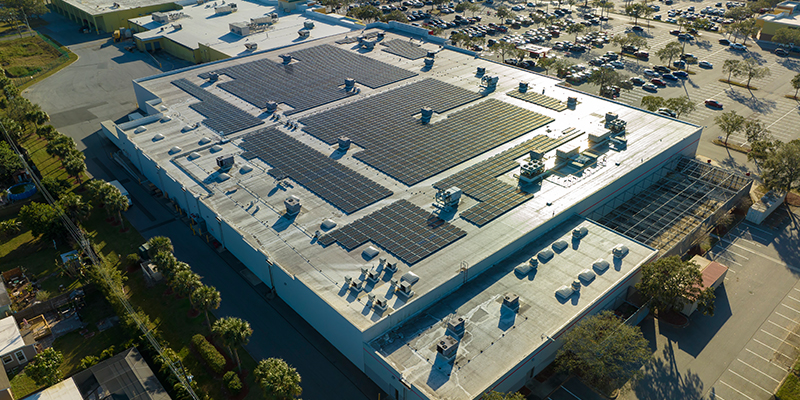The industrial real estate market has been on fire, but this still-hot sector is expected to cool, according to the latest Industrial Space Demand Forecast from the NAIOP Research Foundation. A powerhouse panel of financial experts addressed the capital markets outlook for industrial real estate in a session at NAIOP’s I.CON West in Long Beach, California.
Session moderator Jim Linn, executive managing director, Newmark, led the discussion. The panel included Valerie Achtemeier, vice chairman of capital markets, CBRE; Gregg Boehm, managing director, market officer, industrial, Ares Real Estate Group; and Max Gagliardi, CFA, senior managing director, capital markets, Dalfen Industrial.
Where are you seeing opportunities?
“Industrial is one of the brighter spots in the capital market today – I think we can all agree on that,” Linn said. “We are experiencing some cooling in the absorption of industrial real estate,” he said, but given that the amount of absorption last year was second only to 2021, “even a cooling is going to be a good year for absorption and hopefully rental growth in the capital markets world.”
“We are active and seeing opportunities on the equity side, though it’s limited,” said Boehm. “We are very selective, tactical on what we are looking at on the equity side. We are seeing more activity on the debt side in industrial throughout the country.”
Industrial is currently the best sector for Ares, Boehm said. “Right now, I would say the best opportunities are on the debt side, when you can get strong yields and certainly be in a better position in the capital stack.”
“We are focusing on the top four, top six, top eight markets, less so in anything secondary,” said Gagliardi. “[In the past] we tended to gravitate toward business-friendly jurisdictions, but in the current context, we like the jurisdictions that are difficult to deal with because the supplier barriers are very much supporting some of the rent growth that we have seen.”
How are lenders approaching the market?
“In the debt markets, there is a lot of focus on higher interest rates, and clearly that’s a major barrier, but a bigger concern is the change in the liquidity that we have experienced in the last year, particularly in the banking sector,” said Achtemeier.
“You need banks to be super healthy and, candidly, a little aggressive, to have the capital markets moving on all cylinders,” she said. “The biggest change we have seen in the last nine months has been the change in appetite at the bank level.”
“Industrial is doing well, no distress to speak of, but banks have had to be less transactional and are playing defense, looking at their portfolio, working on mods,” Achtemeier said. “So, the banks have not been particularly active. For a while, the regional banks were stepping in to fill that void, and now they’re requiring heavy deposits.
“We’re seeing groups that can’t get the normal financing that are coming to nonbank lenders like Ares,” Boehm added.
What do you expect for the rest of the year?
“Unfortunately, I feel like rates are going to stay relatively high,” said Achtemeier. “I think you’re going to see less simple debt and things are going to get more structured.”
“At some point, money has to go to work,” Gagliardi said. “The fundamentals on the ground are still there and the drive is there. Demand is strong and we have seen weakness in the bigger spaces. So transactional volume is very much down right now,” he said.
“My prediction would be that we’re going to start seeing toward the second half of the year that volume will go up,” Gagliardi said. “You’re going to start to see transactions and, again, we’re making money. You can sell and make a profit and return money to your investors – that’s the key thing.”
“We’re preaching patience right now,” Boehm said. “I think we will see opportunity later in the year; there will be more activity. We almost have to reset our minds to where the returns were before,” he said. “I preach quality. The quality will prevail, and we will all continue to invest in it. I just think it’s going to take some time.”

This post is brought to you by JLL, the social media and conference blog sponsor of NAIOP’s I.CON West 2023. Learn more about JLL at www.us.jll.com or www.jll.ca.








